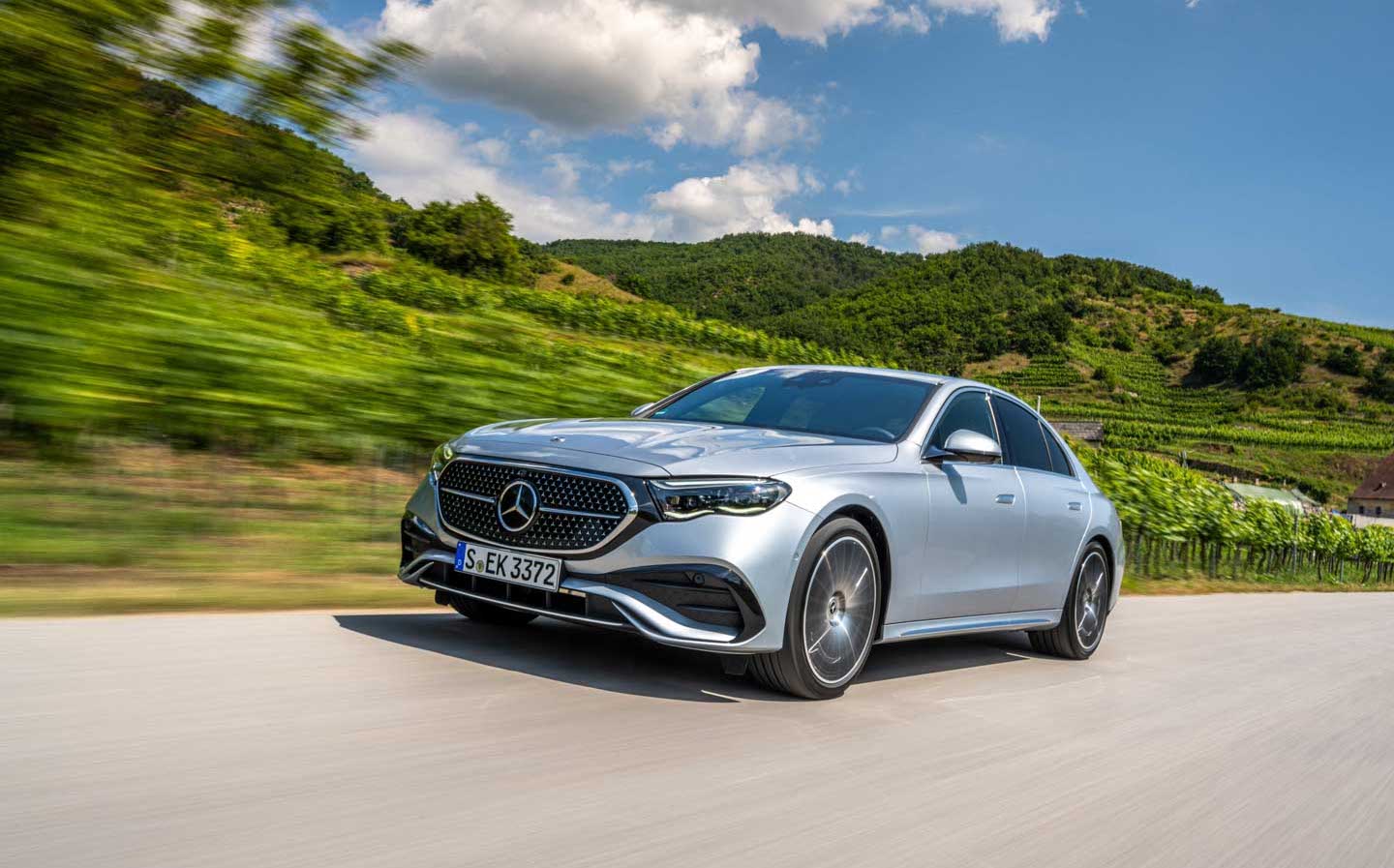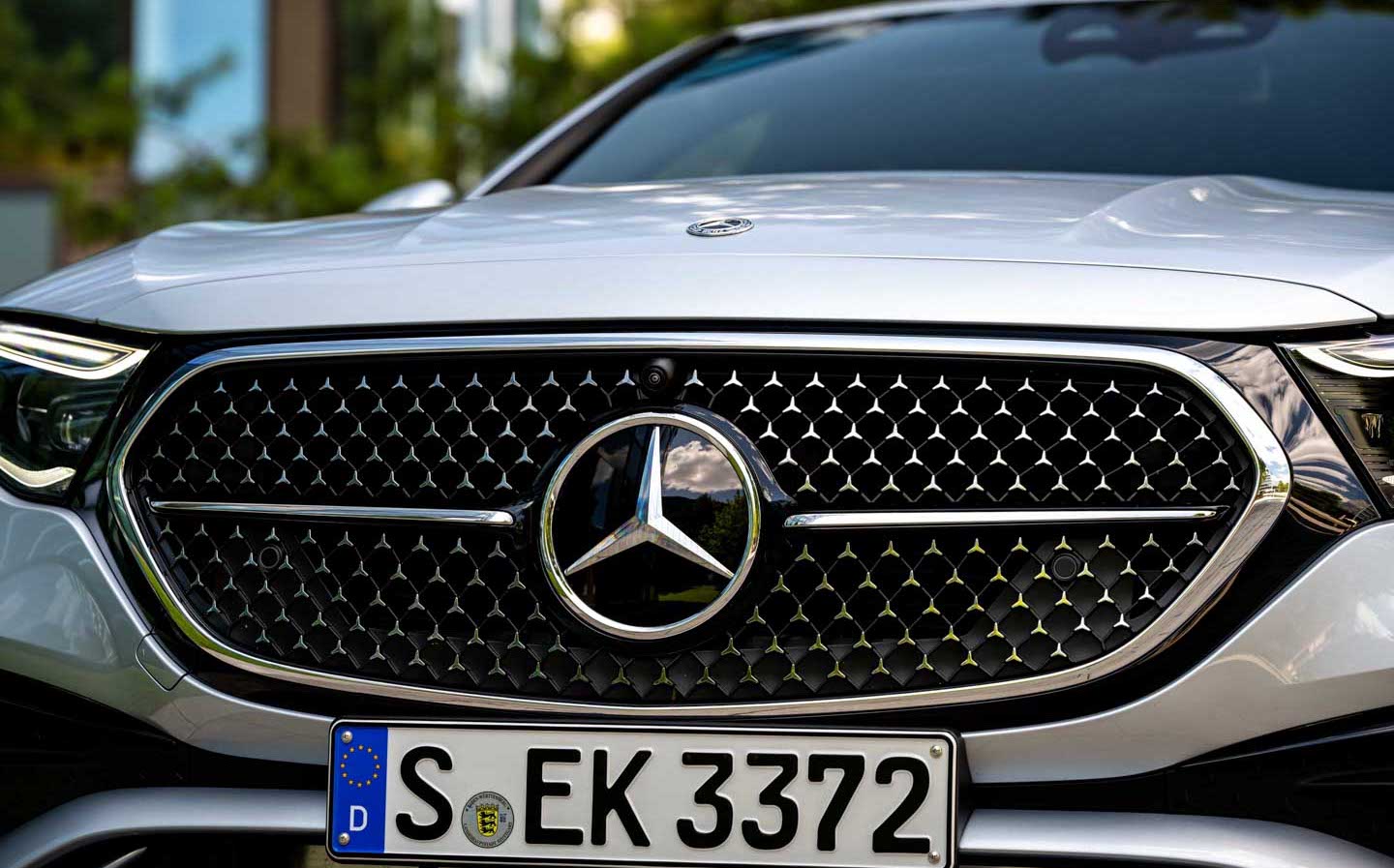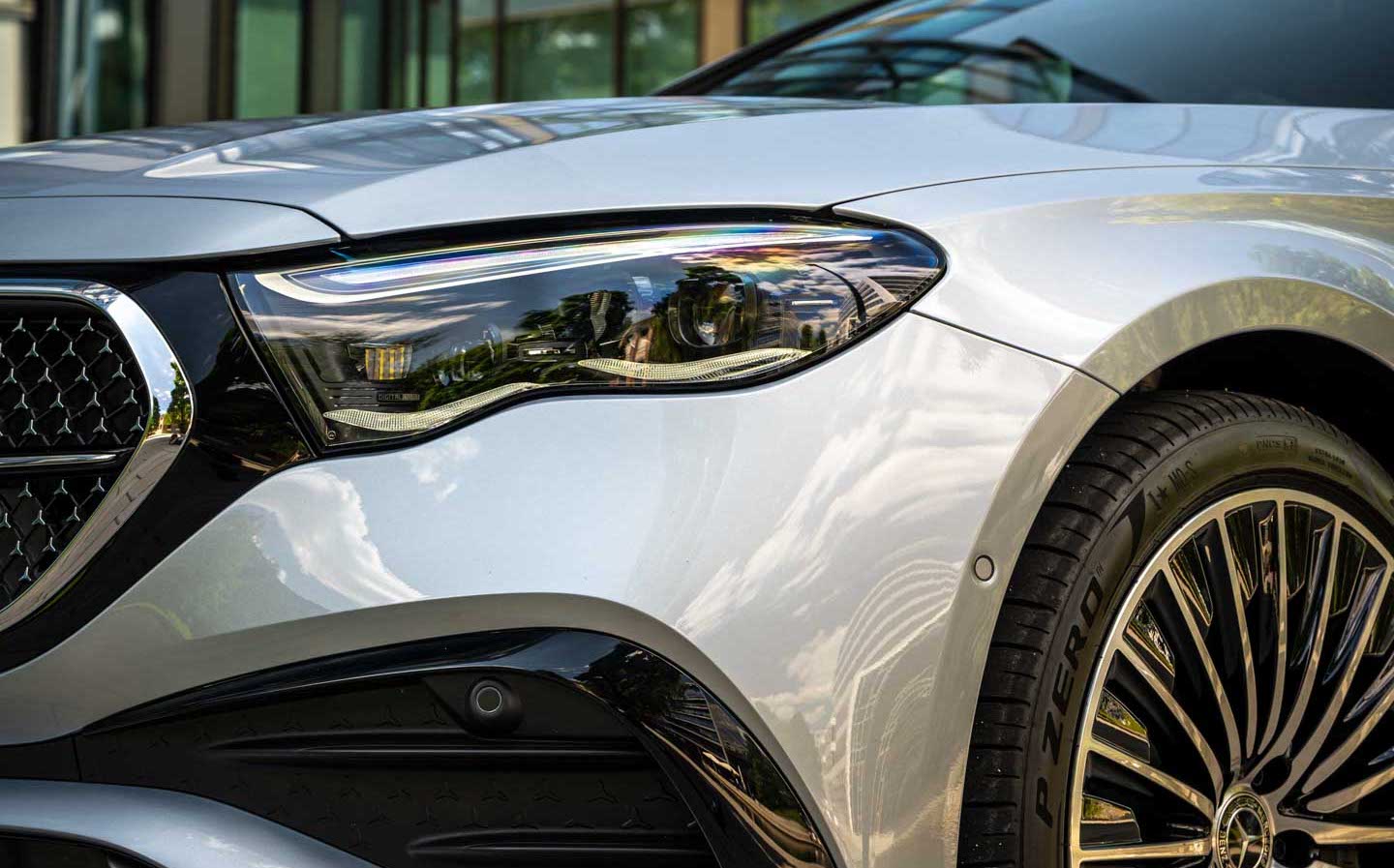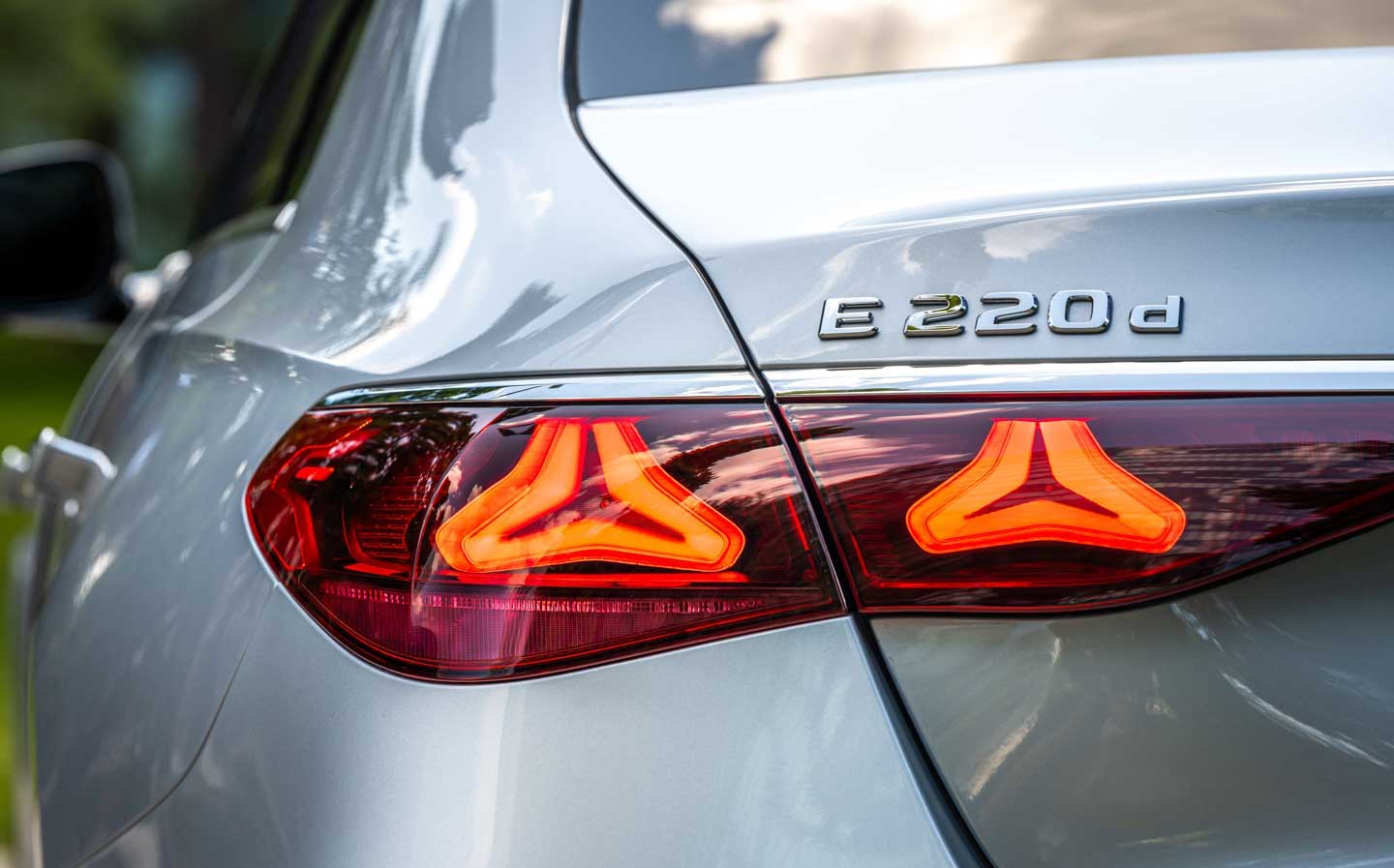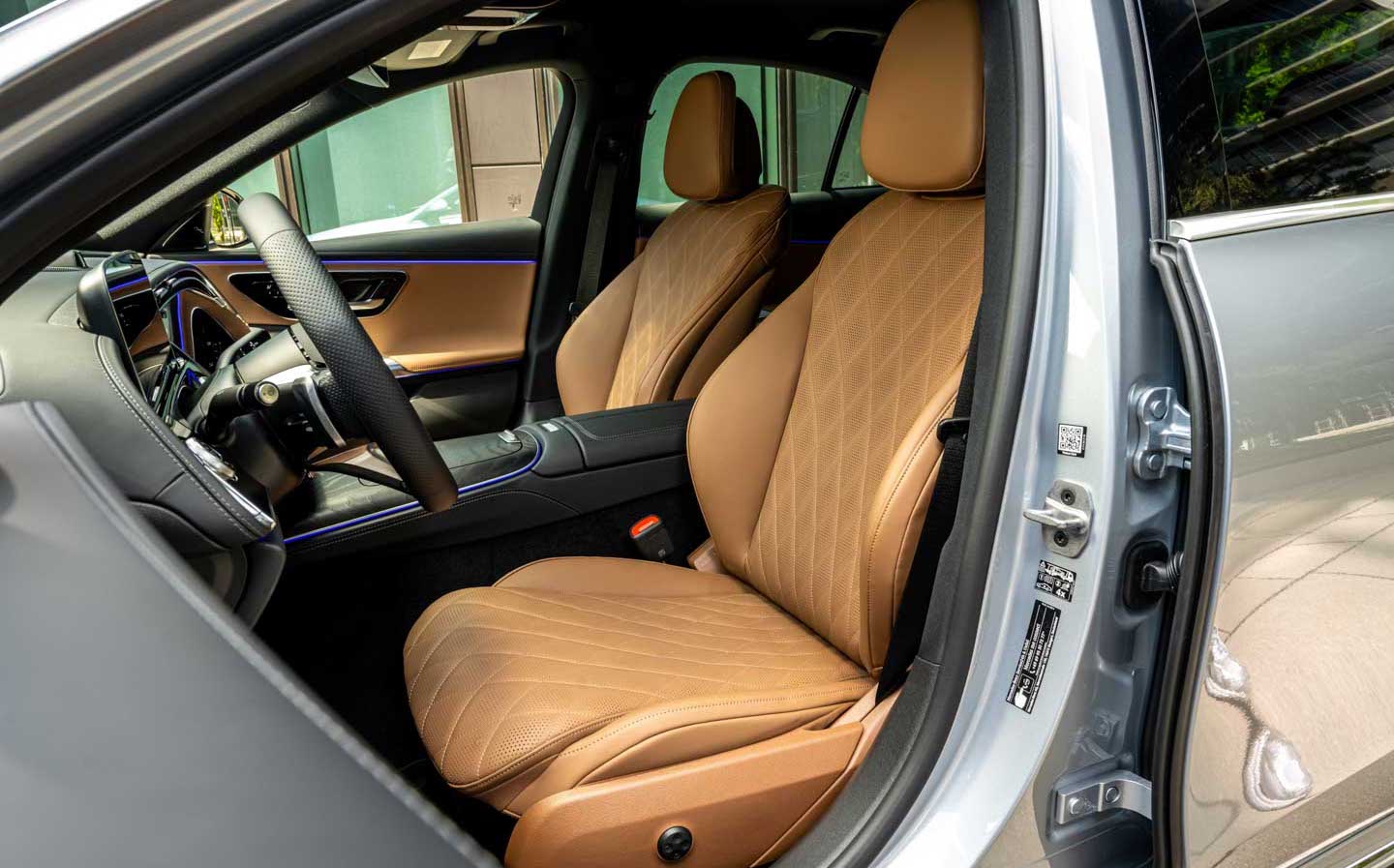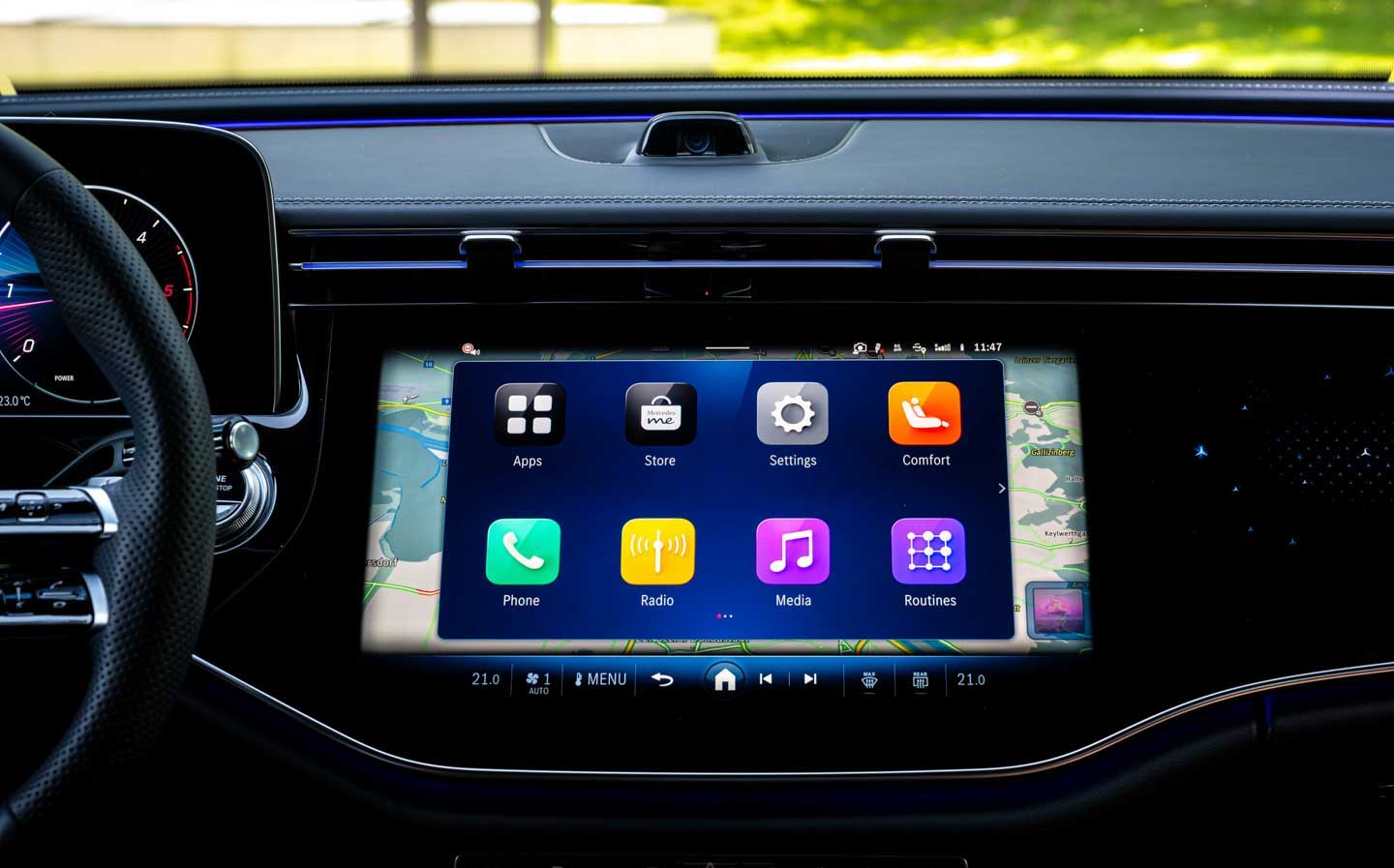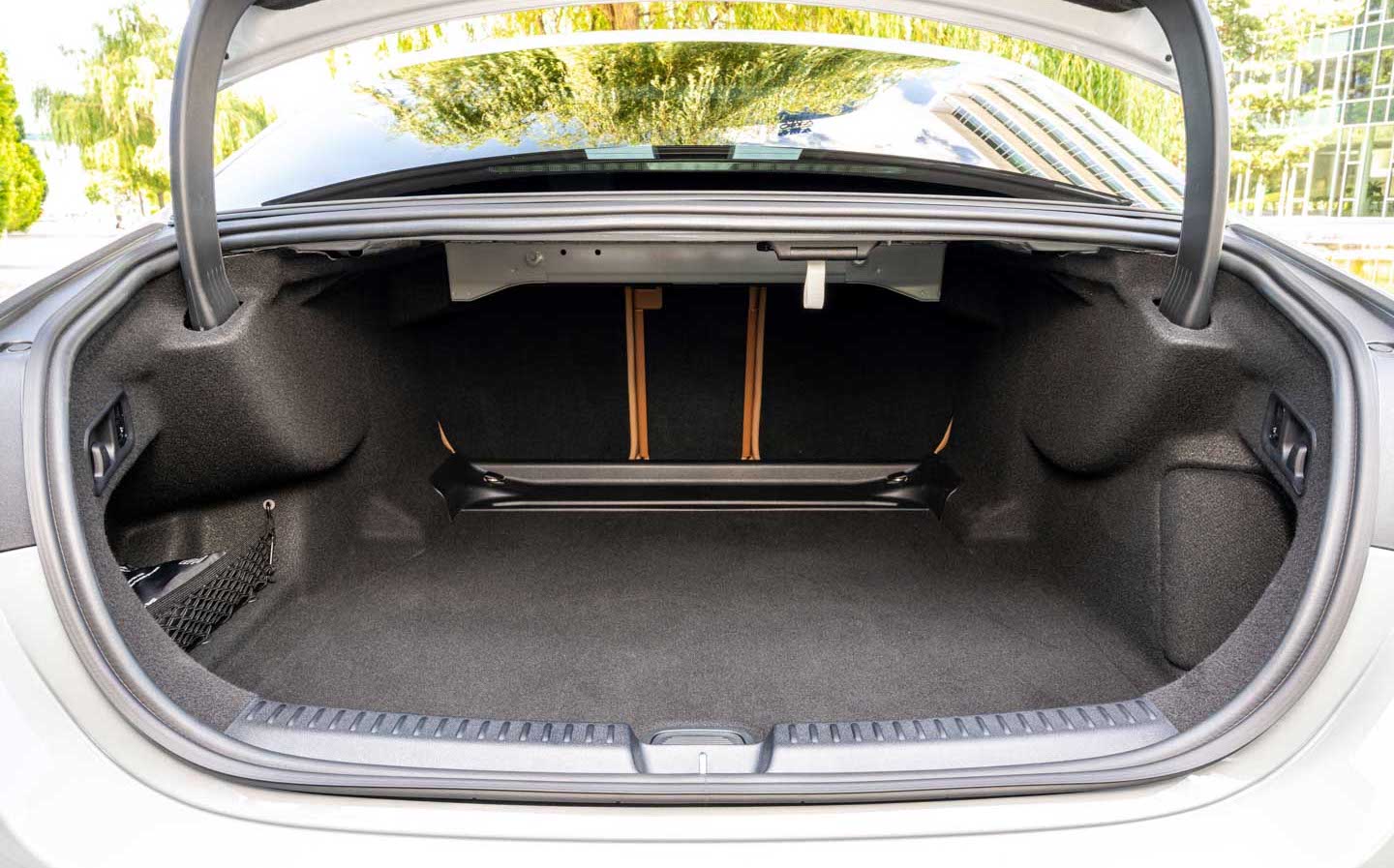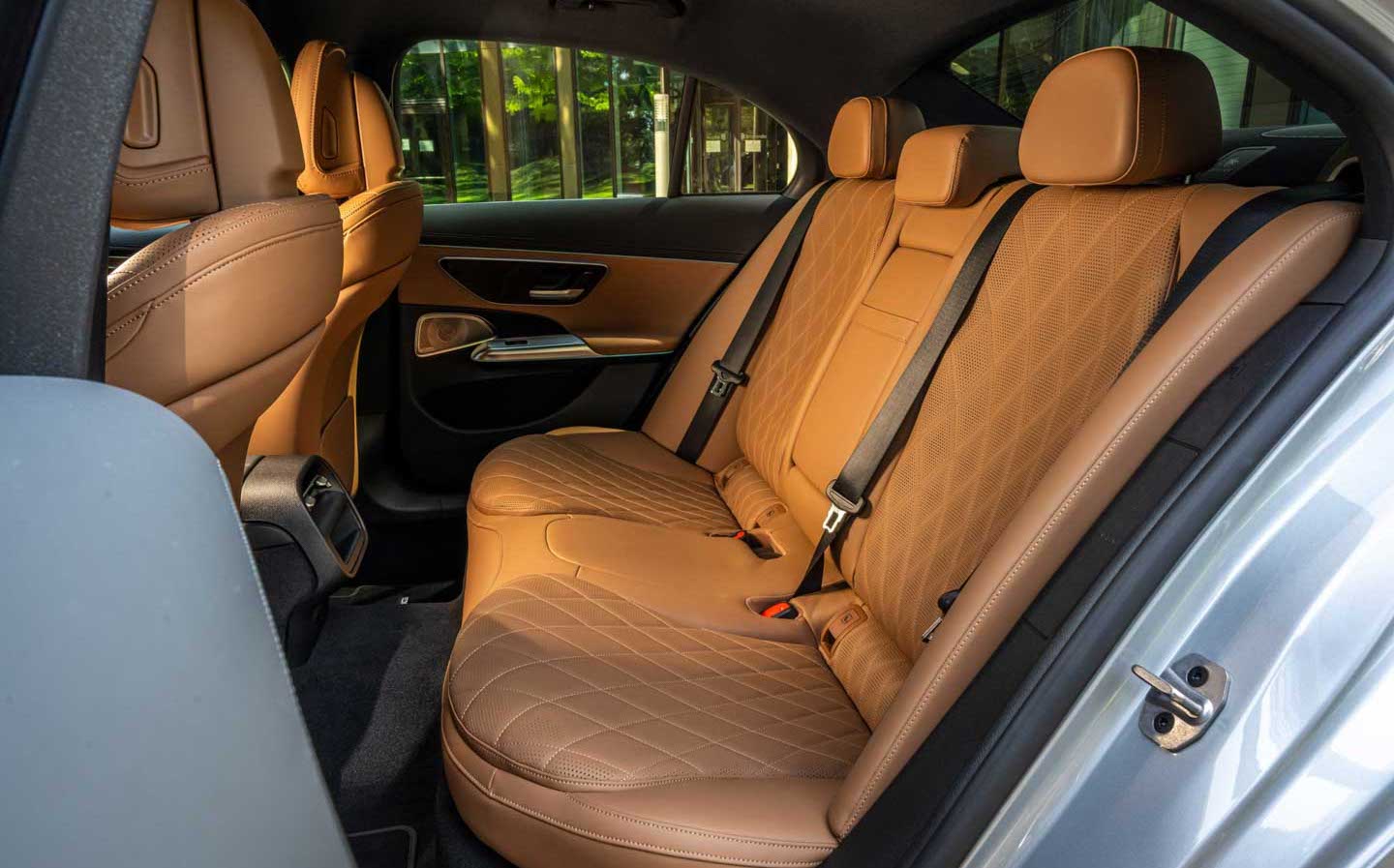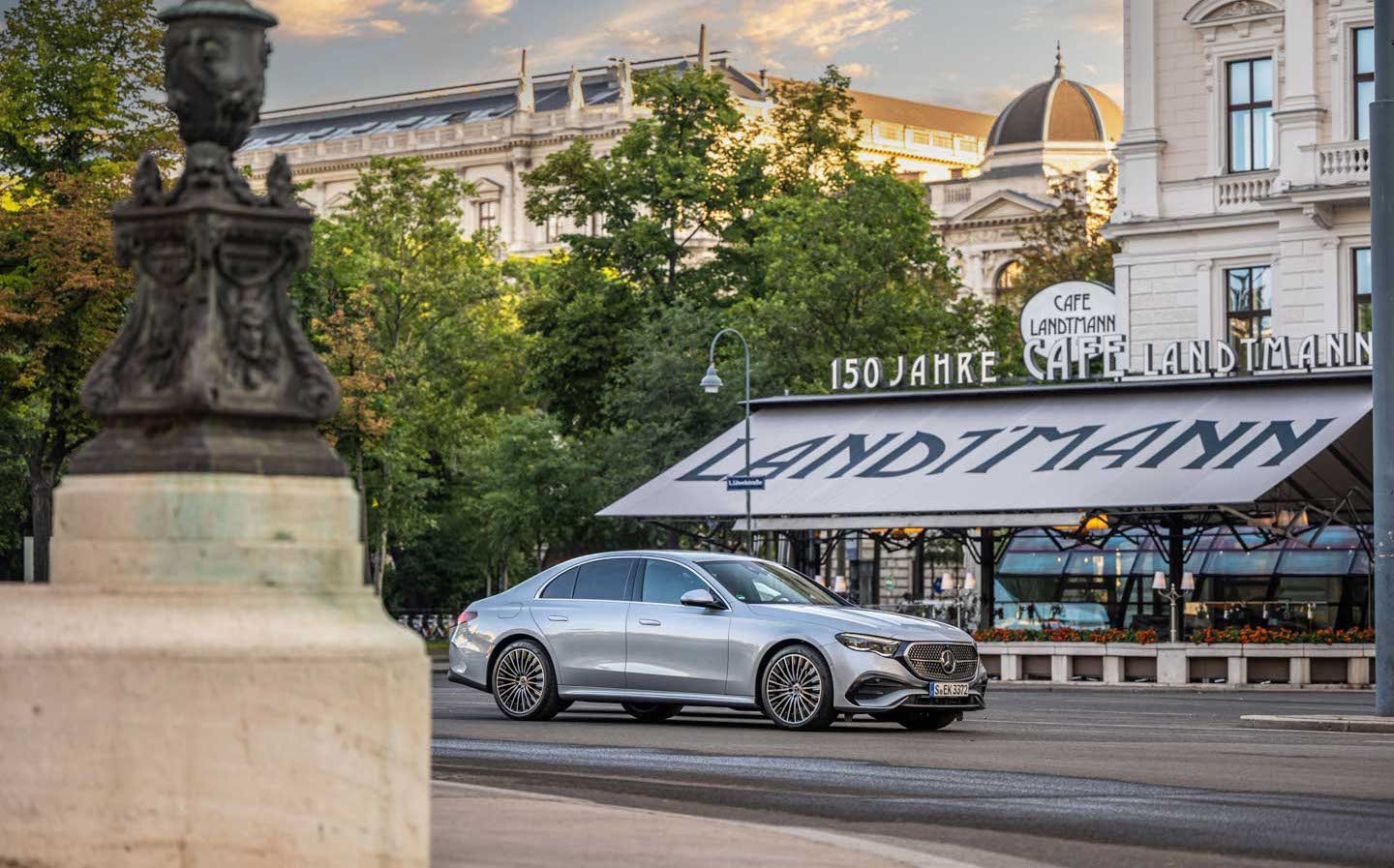Mercedes-Benz E-Class 2023 review: Closer to the S-Class than ever before
Posher, plusher and tech-ier
Officially, the E-Class has been around since 1993, though its roots can be traced back as far as 1953 to the pretty W120 ‘Ponton’, so-nicknamed for its pontoon-like wing styling. For anyone born around that time the new E-Class must be a truly astonishing bit of kit; dressed in sleek bodywork and dripping in technology, it’s like a machine from a sci-fi comic by comparison.
The all-new W214 E-Class is more like a smaller version of the range-topping Mercedes S-Class than ever before. This similarity extends beyond the looks; the quality inside the sumptuous cabin has taken a noticeable upturn, even leaving aside the flashy tech and vast touchscreen displays.
Adding to the style is plenty of substance. Whether you’re driving or being driven in it, the E-Class has taken a giant leap forward.
Exterior design and rivals
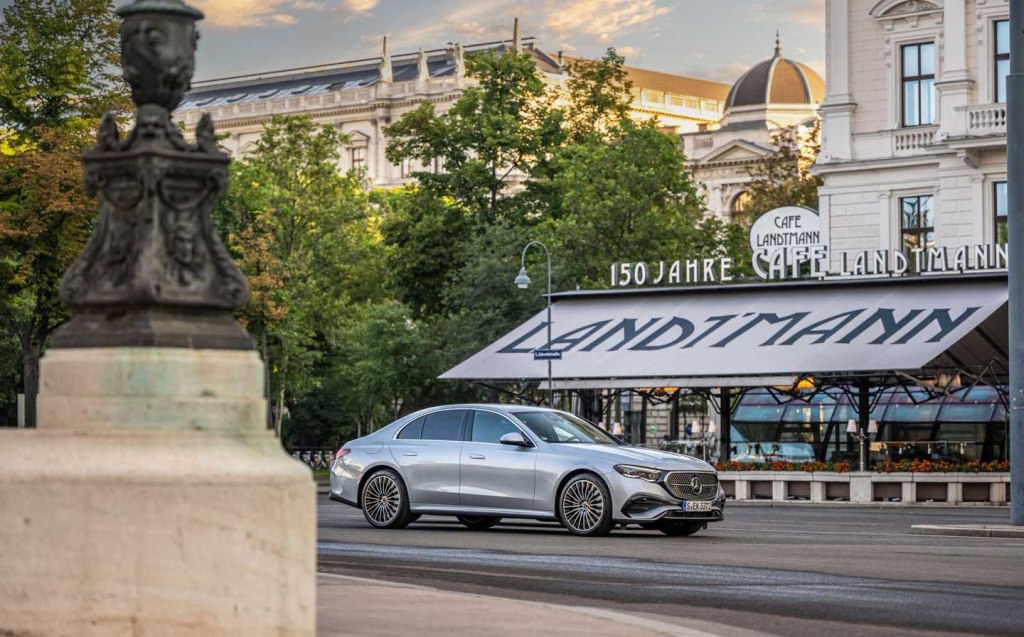
A model as important and successful (and therefore profitable) as the E-Class needs to continue appealing to a broad audience, so playing it safe with design is wise. However, the designers haven’t quite put an S-Class into the photocopier and hit reduce by 20 per cent this time around.
The front-end will divide opinion, primarily due to the gloss black panel surrounding the grille and linking the headlights. Its purpose is to connect the combustion-engined E-Class and the pure-electric models from the EQ range aesthetically.
The overall size of the E-Class has barely changed by more than an inch in any direction from its predecessor. The front and rear wheels have been pushed slightly further apart, which has added to the “cab-rearward” design and makes the passenger compartment a touch more spacious, especially for those in the back seats.
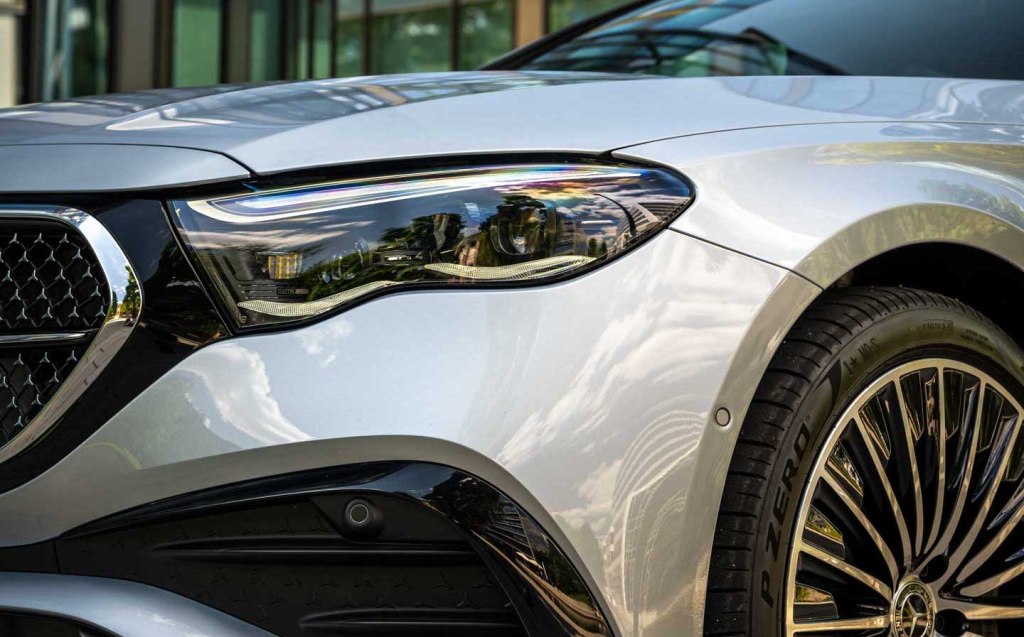
The approach also makes for an attractive, elegant side profile. It’s a car shaped by the ever-increasing need to be as aerodynamic as possible to help improve efficiency and reduce emissions. Even the door handles sit flush against the bodywork to help reduce drag. They pop out to greet you as you approach once the car detects the presence of its key, or you can swipe your finger along the handle’s surface to unlock it.
Around the rear is where there’s a stronger resemblance to its larger S-Class sibling, with chrome-capped wrap-around lights featuring LEDs with two star emblems in each cluster. It is a touch gauche but these are a small blot on an otherwise clean design copybook and a touch less divisive than the style of its chief rival, the just-as-new BMW 5 Series.
There is also the Audi A6 for buyers of executive saloons to consider, though that model is rather long in the tooth at this stage and due for replacement in 2024, while others, such as the Lexus ES and Volvo S90, aren’t quite up to the same luxurious and high tech standards.
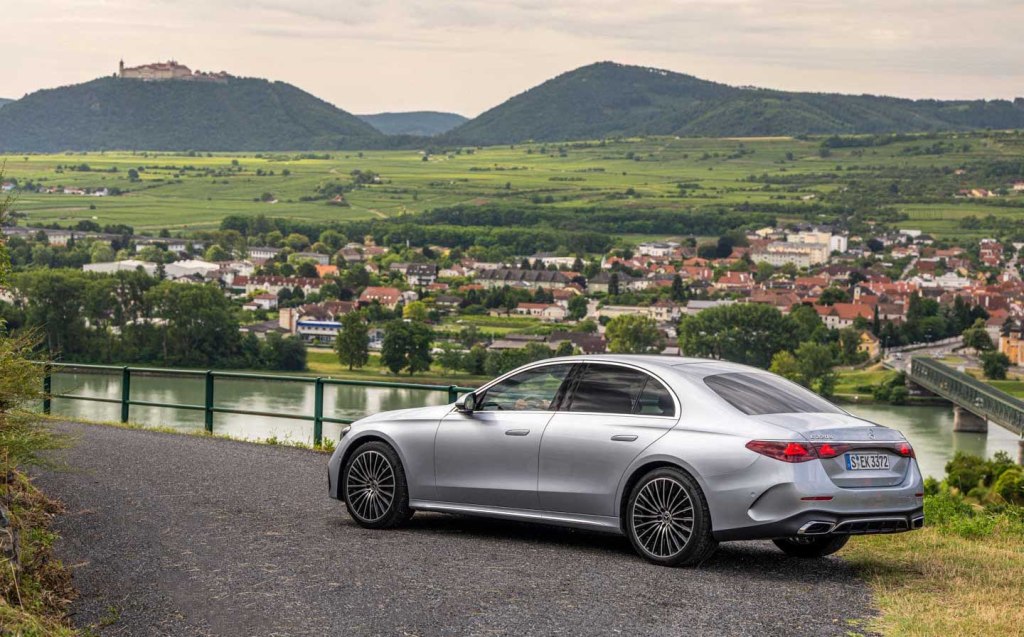
Interior and practicality
Technology and luxury go hand-in-hand these days, and Mercedes is continuing its fully-digital experience in the E-Class with a new full-width display it calls the ‘Superscreen’. Similar to the Hyperscreen available in the S-Class and EQS, it combines a large central touchscreen with a slightly smaller touchscreen in front of the passenger. When that seat is unoccupied, it defaults to showing a static image of the car, much like a screensaver.
Mercedes isn’t only trying to win the digital arms race; the materials inside are all to an extremely high standard. Glossy piano black materials give way to open pore wood inserts on the centre console and the dashboard for cars without the Superscreen. Whichever dash option is chosen, its curved top neatly incorporates the air vents. Separate digital instruments sit in front of the driver, behind the multifunction steering wheel that features touch-sensitive haptic controls.

The extra space between the front and rear axles benefits those seated in the rear. Behind a driver of average height there’s a generous amount of legroom. Ample shoulder room and head room in the outer seats means no cause for complaint, but drawing the short straw to sit in the middle perch means a firmer seat base as well as reduced foot space, because of the transmission tunnel. This detail is one aspect where the electric EQE trumps the E-Class due to its flat rear floor.
There is a total cargo volume of 540 litres in the boots of the petrol and diesel E-Class versions, whereas the plug-in hybrid models make do with a smaller 370-litre space due to the additional room required for the high-voltage battery underneath. One improvement over the previous PHEV E-Class is that is no longer a stepped floor, so it is a little more practical.
Technology and safety
Staying connected in the business world is crucial for some, so the Superscreen enables Zoom and Webex video calls in conjunction with a dashboard camera that is mounted on top. That’s not the only camera that features inside; the Superscreen also has a driver monitor that tracks eye movement to ensure you concentrate on the road. If the passenger watches media on their display and the driver looks across, the screen dims so that the driver cannot see it.
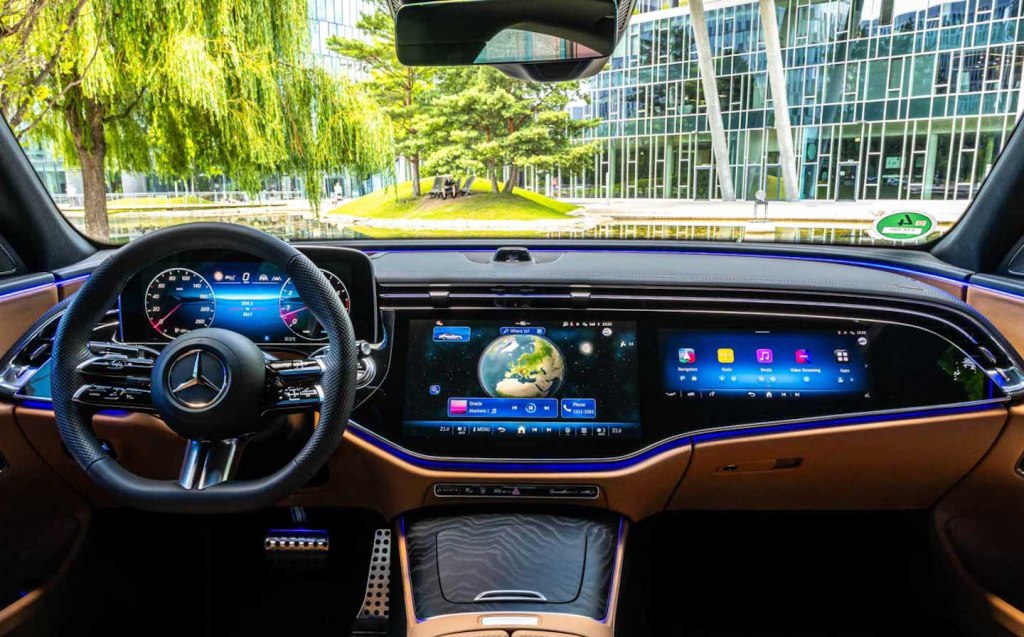
Mercedes has an enhanced Active Brake Assist system that continually monitors its surroundings to serve as an extra pair of eyes and can intervene if it thinks the driver has missed a hazard. Its sensors can even detect cyclists and pedestrians approaching from the side, and activate the car’s emergency brake function.
The system will also use ambient lighting inside to help alert the driver, indicating the side where the risk is coming from. This technology additionally helps mitigate a head-on accident where vehicles cross at junctions.
During the car’s launch we had the opportunity to try the new Automatic Lane Change Assist function. This driver aid will initially roll out in the North American market before coming to Europe. Using its array of sensors and radar to monitor its surroundings on the motorway, the car can decide if and when to change lanes to make progress in traffic. For example, if it senses that you’re approaching a slower-moving truck, it reads the road behind to see if it is safe to overtake.
If it’s clear, the car automatically indicates, changes lanes and either maintains its speed or speeds up if necessary to complete the overtake. After completing the overtake, the car indicates again and moves back into the left lane. As with the Tesla system, by law in the UK the driver must maintain hold of the steering wheel at all times and can instigate the lane change manoeuvre by indicating, though the car will control the steering itself. In our experience the lane changing was very smooth but the system did seem overly cautious when ‘looking’ for a gap in the traffic to overtake.
Caution is no bad thing with an automated system such as this one, but the car was also slow to move back into the inner lanes, sometimes not doing it at all despite there being an empty and clear lane to the left. Mercedes said that the software wasn’t at European specification and it was more of a preview.
Most drivers will be able to overtake more quickly than the system as it stands, but with some further development it could be helpful for those who spend a high proportion of their driving on the motorway.
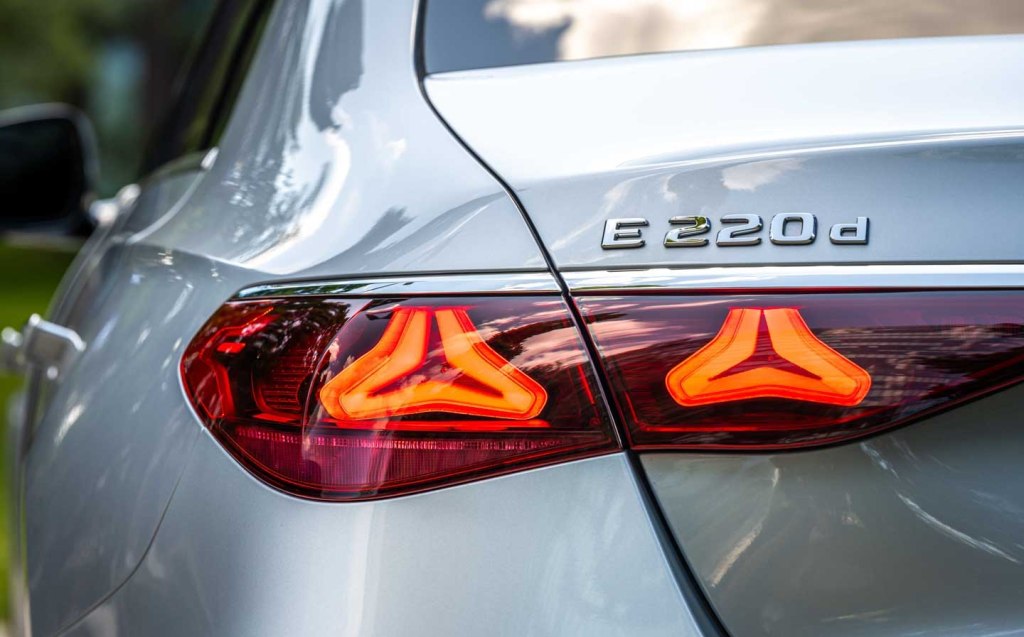
Performance, power output and acceleration
Mercedes is covering all the bases with the E-Class engine range, providing something for almost everyone. Unlike chief rival BMW, which offers a pure-electric version of the new 5 Series, Mercedes doesn’t sell the E-Class as an EV; there is the EQE for that.
The E-Class range starts with the E 200, powered by a 2-litre four-cylinder petrol engine using 48-volt mild-hybrid tech to reduce fuel consumption and emissions. This engine produces up to 201bhp and, like all E-Class versions, is paired with a nine-speed automatic gearbox. Acceleration isn’t lacking, with 0-62mph arriving in a respectable 7.5 seconds.
The 194bhp E 220 d should appeal to fleet and company car drivers, officially returning as much as 58.8mpg and is only a tenth of a second slower than the E 200 when accelerating up to 62mph. This engine is also available with 4Matic all-wheel drive, though this slightly increases fuel consumption.
We found it odd that when you press your right foot down the transmission will swiftly knock down a few gears, which seems unnecessary given its ample torque. More of a problem, though, is the the four-cylinder engine creates a coarse racket under harder acceleration. It’s far from pleasant and seems out of place in a car that comprehensively covers every other aspect of refinement.
Offering much more refinement, no doubt, will be the two plug-in hybrids that should be available from launch. The E 300 e features a 2-litre petrol engine and a 95kW electric motor to produce a total maximum output of 308hp. Its battery, with a capacity of 25.4kWh, can provide more than 70 miles of electric driving.
That same battery and electric motor go into the E 400 e, though this beefier model uses a more powerful petrol engine to produce up to 375bhp, making it the fastest accelerating and most powerful E-Class until the high-performance AMG models come down the line.
Mercedes will also introduce diesel plug-in hybrid powertrains at a later date.
Ride and handling
With a car that looks and, from the perspective of the interior, feels the way the E-Class does, there’s an expectation that it will also drive well. The E-Class doesn’t disappoint in that respect, at least from the comfort standpoint. Helping the ride is optional Airmatic air suspension as part of a package that includes rear-wheel steering. The standard suspension uses a revised set-up with steel springs and a selective damping system.
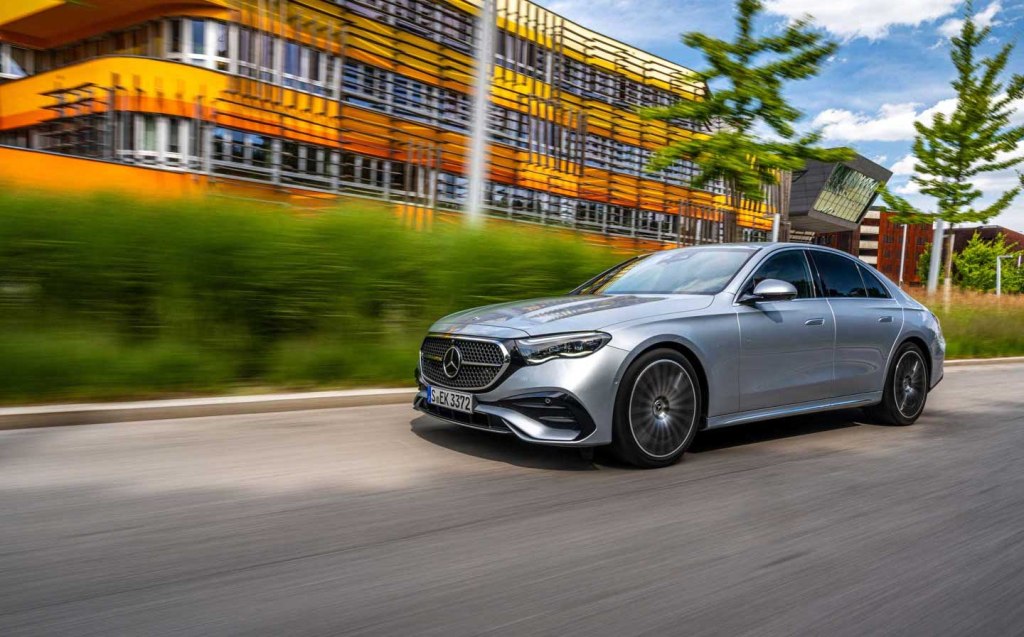
The Airmatic system produces a smoother ride with a level control function to maintain the car’s ride height and angle regardless of vehicle load. This is beneficial if carrying more weight in the car, either in the form of passengers or cargo. The Mercedes glides serenely at cruising speeds, and the ride comfort perfectly complements the mostly hushed cabin.
Light steering is more about curating the luxurious driving experience than depriving drivers of feedback. The Mercedes holds the road remarkably well, responding to the smallest of driver inputs. The optional rear-wheel steering shrinks the car’s turning circle by 90cm, a feature that comes into its own when navigating narrower streets and car parks.
Pricing and on-sale date
Pricing for the new E-Class has yet to be finalised, but it is expected to have a starting price in the region of £50,000. There will be a broad range of model variants with mild-hybrid and plug-in hybrid powertrains. High-performance versions from the Mercedes-AMG division will come further down the line. The stylish E-Class Estate has already been unveiled and will arrive in the UK in 2024.
Verdict: Mercedes-Benz E-Class review
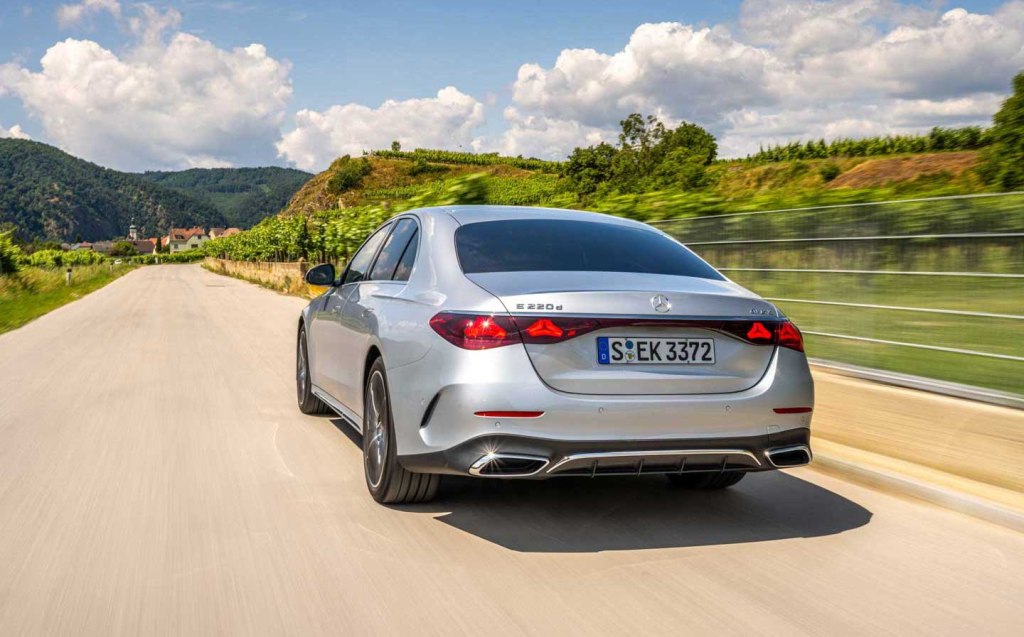
The desire and effort to move the E-Class further upwards to a more luxurious standing than before has proven mostly successful. The only aspect where it falters is in its diesel engine, which sometimes lacks refinement, if not performance. There’s a reason why true luxury cars don’t use four-cylinder diesels these days. Nevertheless, the latest E-Class delivers a polished and enjoyable driving experience.
Related articles
- After reading this review of the 2023 Mercedes-Benz E-Class, you might be interested to read about the new BMW 5 Series
- Want to know what the best-selling cars in the UK are?
- Or check out the best luxury cars to buy
Latest articles
- Seven great automotive events to visit this summer, from F1 to art and champagne
- Watch new Porsche 911 GT3 smash Nürburgring record for manual cars
- Skoda Elroq 2025 review: Czech carmaker can’t seem to miss with its electric family cars
- Five best electric cars to buy in 2025
- Should I buy a diesel car in 2025?
- F1 2025 calendar and race reports: The new Formula One season as it happens
- Zeekr 7X AWD 2025 review: A fast, spacious and high tech premium SUV — but someone call the chassis chief
- Denza Z9GT 2025 review: Flawed but sleek 1,062bhp shooting brake from BYD’s luxury arm
- Extended test: 2024 Renault Scenic E-Tech review


